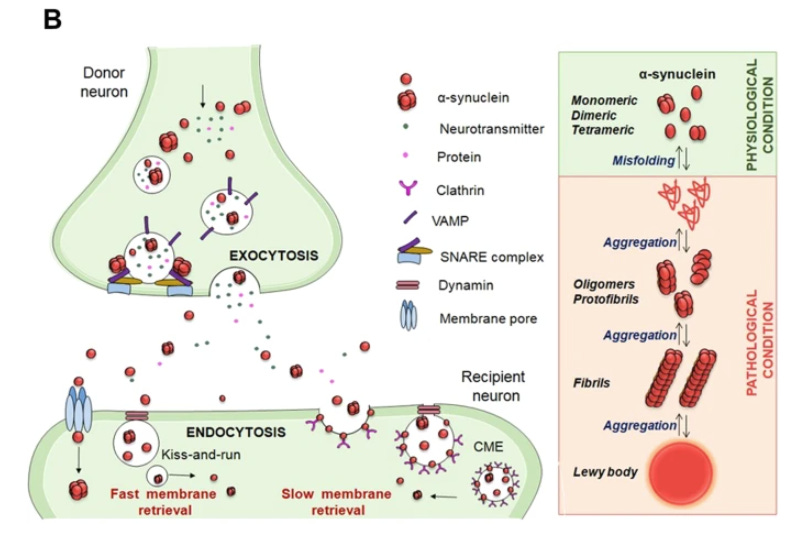Another eminent neuroscientist hit with allegations of manipulation and fraud
Hundreds of Eliezer Masliah's publications on Alzheimer's and Parkinson's research have come under scrutiny.
Over the past two years there have been growing reports of fraud and manipulation in the field of neurodegenerative research, including a report from Science that one of the most pivotal studies in Alzheimer’s pathology, and a study that directed most of the funding in Alzheimer’s research towards the amyloid hypothesis, appeared to have doctored images which brought into question the actual findings of the study.
This comes on the heels of several different Alzheimer’s immunotherapies gaining fast-tracked approval even with limited data of clinical efficacy and concerning evidence of serious adverse events in the form of brain bleeds and brain swelling.
In some ways these revelations are surprising due to the lucrative nature that is Alzheimer’s, dementia, and Parkinson’s research. One would expect that such a highly regarded field of research would be barred from such bad science. And yet, it’s this lucrative nature that is likely enabling many of the insidious malfeasance that is going on. There’s a lot to be gained to get an Alzheimer’s or Parkinson’s therapeutic to market, and there’s a lot of funding that gets granted towards this type of research especially as we continue to have an increasingly elderly population. Being at the forefront of this field carries with it a lot of renown when the public yearns for any sort of treatment to help their loved ones.
I’ve highlighted many of these issues regarding Alzheimer’s research because it embodies many of the issues we see in medicine/science where the science comes last, and the corporate greed comes first. More importantly, I’ve tried to highlight how people’s widespread ignorance can unintentionally lead to situations that encourage bad science to give the public something that they have no understanding of. Wanting a cure irrespective of the underlying research only helps to further drive questionable research.
As we become more critical of the medical and science field it becomes even more important that we understand and criticize things from an objective lens.
This takes us to the current revelations, all of which revolve around one researcher named Eliezer Masliah.
The following information will be a quick summary of some of Masliah’s work as well as the controversies. Note that all this information is coming to light through investigation from Science’s staff, as well as the investigation of many fraud sleuths such as Matthew Schrag, Yu Mang, and of course Elizabeth Bik who was pivotal in pointing out issues with the Alzheimer’s pathology paper that was recently retracted.

Masliah has had decades of research under his belt, and he’s considered to be one of the most prolific/cited researchers in the field of neuroscience, with a hand in many different organizations and institutions.
Here’s a short biography featured on the Michael J. Fox Foundation for Parkinson’s Research website:
Dr. Masliah received his MD in 1982, completed his residency in pathology at the National Institutes of Health in Mexico City in 1986 and a fellowship in neuropathology at the UC, San Diego in 1989. Dr. Masliah is currently professor at the Departments of Neurosciences and Pathology at UC, San Diego and director of the Autopsy Service at the UCSD-Medical Center. Dr. Masliah has published over 500 research articles. His laboratory investigates the molecular mechanisms of synaptic degeneration in Parkinson’s and Alzheimer’s diseases and is actively involved in developing novel treatments for these devastating disorders. Dr. Masliah’s laboratory was one of the first to develop a transgenic pre-clinical model for Parkinson’s and Alzheimer’s diseases and at identifying alpha-synuclein as a major contributor to the pathogenesis of these disorders. The Masliah laboratory is currently developing new treatment for Parkinson’s disease using small molecules that block accumulation of toxic alpha-synuclein in the brain.
This information seems outdated as Masliah appears to have authored nearly 800 papers. And what should interest readers more is the fact that Masliah was made director of the neuroscience division at the National Institute of Aging (NIA) in 2016 due to his work involving neurodegeneration.
Masliah’s work included examining the role of alpha-synuclein in the pathology of Alzheimer’s and Parkinson’s. Alpha-synuclein is a protein found within the presynapse of neurons and is involved in vesicle trafficking and release of neurotransmitters across synpases. Like with many neurodegenerative-related proteins, alpha-synuclein becomes a problem when misfolded forms of this protein aggregate.

It’s alleged that aggregation of these proteins results in synapse dysfunction and possible neuronal death through a possible immune/neuroinflammatory-mediated response.
This has resulted in research into therapeutics that aim to target these protein aggregates, with the idea that removal of these aggregates would attenuate some of the symptoms related to Parkinson’s Disease and Lewy Body Dementia.
Masliah’s work in this field has resulted in prospective therapeutics such as Prasinezumab, an IgG based monoclonal antibody intended to bind to alpha-synuclein and remove the protein aggregates in much the same way that many of the immunotherapies for Alzheimer’s is intended to bind to amyloid. He was also a pivotal player when it came to the therapeutic Cerebrolysin, which is a collection of neuropeptides derived from pig’s brain intended to mimic neurotropic factors1- molecules which are key to the growth, survival, and differentiation of neurons.
Questions concerning Masliah’s body of work appears to have occurred over the past two years, and yet the degree of malfeasance may point to decades of systemic fraud. In fact, the fraud and manipulation seem so extensive that a nearly 300-page was created pointing out many issues in imaging pertaining to over 132 publications associated with Masliah, as highlighted in the excerpt from Science:
But over the past 2 years questions have arisen about some of Masliah’s research. A Science investigation has now found that scores of his lab studies at UCSD and NIA are riddled with apparently falsified Western blots—images used to show the presence of proteins—and micrographs of brain tissue. Numerous images seem to have been inappropriately reused within and across papers, sometimes published years apart in different journals, describing divergent experimental conditions.
After Science brought initial concerns about Masliah’s work to their attention, a neuroscientist and forensic analysts specializing in scientific work who had previously worked with Science produced a 300-page dossier revealing a steady stream of suspect images between 1997 and 2023 in 132 of his published research papers. (Science did not pay them for their work.) “In our opinion, this pattern of anomalous data raises a credible concern for research misconduct and calls into question a remarkably large body of scientific work,” they concluded.
NIH made a statement regarding these claims of fraud, mentioning that they examined two articles in particular which have been brought to their attention:
Following an investigation, the National Institutes of Health (NIH) has made findings of research misconduct against Eliezer Masliah, M.D., due to falsification and/or fabrication involving re-use and relabel of figure panels representing different experimental results in two publications. NIH will notify the two journals of its findings so that appropriate action can be taken. NIH initiated its research misconduct review process in May 2023 after it received allegations from the HHS Office of Research Integrity (ORI) that same month. NIH began its investigation phase in December 2023, concluded its investigation of these allegations on September 15, 2024, and notified HHS ORI of its findings.
It appears that Masliah is not serving as a director at the time the NIH statement was made, which doesn’t tell much regarding whether he was relieved of his position or whether he has not served a key role in the past months.
Even more surprising, the article mentions that Masliah’s work may not have been examined prior to his hiring, meaning that one of the largest institutions in the world responsible for overseeing the public’s health may have failed to do their due diligence in assessing Masliah for questionable work.
Masliah’s role as director, as well as his extensive body of work, means that Masliah carries a lot of influence in the type of research that gets conducted, as well as the type of research that gets funding:
As a division director, Masliah would hold sway over NIA’s neuroscience funding, according to Alan Leshner, who previously led two other NIH institutes and headed AAAS (publisher of Science) until 2015. In most cases, he says, institutes select grants based on scores awarded by peer-review “study sections.” But institute and division directors can fund preferred projects, such as studies of amyloid, the brain protein linked to Alzheimer’s disease, over better scoring competitors.
“There’s no question that in most cases, a division director … is viewed as someone who has the judgment to set priorities,” Leshner says. They can also alter the direction of a field. If a division director shows interest in a particular aspect of neuro-science related to aging, he adds, “you get [many] proposals in the next round in that area.”
After all, it was Masliah’s research that appears to have helped Prasinezumab get approval for clinical trials:
Masliah’s work, for example, helped win a nod from the U.S. Food and Drug Administration (FDA) for clinical trials of an antibody called prasinezumab for Parkinson’s.
It’s important to note that there is no clear evidence that Masliah used his role as director to divert funding or to direct research endeavors to specific areas. As of now any of these claims are to be considered purely speculative. Nonetheless, one can’t help but question if such an act could have occurred given the current circumstances. Again, there is much for Masliah to gain by producing fraudulent images, and so it’s rather difficult to decouple Masliah’s role as director with the belief that he may have some self-serving intentions in his role.
There’s a lot to this story that will come to light in the future, and I will try to cover this story as it continues to develop. But in the meantime, I encourage readers to read the Science article for themselves to get a better understanding of what is known.
In general, it’s scary to think how much of what we know in science may just be built on lies and misinformation. Science, and especially neurodegenerative research, is in a very precarious position in which trust in such fields continues to erode. But it’s not as if this erosion is coming out of the blue- science institutions continue to show that they are focused more on prestige and money than they are regarding fruitful scientific endeavors. There’s an obvious lack of integrity that pervades much of the research that is being conducted.
If scientists want to gain better trust with the public there needs to be greater humility, greater, transparency, and be more open to criticizing bad science and calling out bad actors.
And if people want better science, they must have more realistic expectations for what science is capable of, as well as an understanding of what research is going on. It’s within these areas of obscurity where scientists with ill-intent can flourish as an ignorant public is unable to discern good science from bad.
We need to understand science better to get better science in turn.

Additional readings for those interested:
I stumbled across an article from the website For Better Science which appears to have covered a good deal of the controversy around Masliah starting all the way back to early 2023. This seems like a good read for those who want an additional look into some of the controversy, the images, and questions from researchers.
Calabresi, et al.2: Alpha-synuclein in Parkinson’s disease and other synucleinopathies: from overt neurodegeneration back to early synaptic dysfunction.
Stefanis, L.3: α-Synuclein in Parkinson's disease.
Tolosa, et al.4: Challenges in the diagnosis of Parkinson's disease.
If you enjoyed this post and other works please consider supporting me through a paid Substack subscription or through my Ko-fi. Any bit helps, and it encourages independent creators and journalists such as myself to provide work outside of the mainstream narrative.

Severini C. (2022). Neurotrophic Factors in Health and Disease. Cells, 12(1), 47. https://doi.org/10.3390/cells12010047
Calabresi, P., Mechelli, A., Natale, G. et al. Alpha-synuclein in Parkinson’s disease and other synucleinopathies: from overt neurodegeneration back to early synaptic dysfunction. Cell Death Dis 14, 176 (2023). https://doi.org/10.1038/s41419-023-05672-9
Stefanis L. (2012). α-Synuclein in Parkinson's disease. Cold Spring Harbor perspectives in medicine, 2(2), a009399. https://doi.org/10.1101/cshperspect.a009399
Tolosa, E., Garrido, A., Scholz, S. W., & Poewe, W. (2021). Challenges in the diagnosis of Parkinson's disease. The Lancet. Neurology, 20(5), 385–397. https://doi.org/10.1016/S1474-4422(21)00030-2





Decade-long careers in research can be made from the seemingly insoluble problem of neurodegeneration, funded as is is by the public and investors to the tune of, surely, a billion of dollars a year or so.
However, prevention, to a large degree, is easy: Ensure everyone has at least the 50 ng/mL (125 nmol/L) circulating 25-hydroxyvitamin D the immune system needs to function properly.
Please read the research articles cited and discussed at: https://vitamindstopscovid.info/00-evi/ . Regarding dementia: https://vitamindstopscovid.info/00-evi/#3.3
Ayers et al. 2022 https://www.pnas.org/doi/abs/10.1073/pnas.2113489119 showed that Parkinson's disease (PD), dementia with Lewy bodies and multiple system atrophy (MSA) all involve misfolded (prion) alpha-synuclein tangles and that the structure of the misfolding was different in each of these three conditions.
Ogura et al. 2021, in Japan https://www.sciencedirect.com/science/article/pii/S2405650221000617 showed that MSA sufferers averaged 10.5 ng/mL (26 nmol/L) circulating 25-hydroxyvitamin D and that PD sufferers averaged 13.4 ng/mL (34 nmol/L), while healthy controls averaged 27 ng/mL (67 nmol/L). PD does not lower 25-hydroxyvitamin D https://sci-hub.se/10.1001/archneurol.2011.30, so the causality is from low 25-hydroxyvitamin D to neurodegeneration. (p = 0.0001).
UV-B skin exposure and foods, fortified with vitamin D3 or not, cannot safely and reliably attain the 50 ng/mL level of circulating 25-hydroxyvitamin D (make primarily in the liver from vitamin D3 cholecalciferol, and as measured in "vitamin D" blood tests).
Fortunately, vitamin D3 supplementation in small quantities will attain this 25-hydroxyvitamin D level after several months, with the amount to take, on average, per day, depending on body weight and obesity status, with no need for medical monitoring or 25-hydroxyvitamin D blood tests: New Jersey based Professor of Medicine Sunil Wimalawansa has such recommendations https://vitamindstopscovid.info/00-evi/#00-how-much. These are based on his article: "Rapidly Increasing Serum 25(OH)D Boosts the Immune System, against Infections - Sepsis and COVID-19" Nutrients 2022-07-21 http://www.mdpi.com/2072-6643/14/14/2997 as simplified somewhat in his FLCCC webinar: https://odysee.com/@FrontlineCovid19CriticalCareAlliance:c/Weeekly_Webinar_Aug16_2023:d?t=3386.
0.125 mg (5000 IU) a day on average is sufficient for 70 kg 154 lb body weight without obesity. This is about 8 times greater than what governments and many doctors recommend.
"5000 IUs a day" sounds like a lot, but it is 1/8000th of a gram = 1 gram every 22 years. Pharma grade vitamin D3 costs about USD$2.50 a gram ex-factory. A credit card weighs 5 grams.
Without proper vitamin D3 supplementation such as this, most people - at least in winter - have half or less (down to 1/10th) of the 50 ng/mL 125 nmol/L circulating 25-hydroxyvitamin D they need to be healthy.
Humanity needs about a tonne of vitamin D3 a day for us all to attain at least 50 ng/mL 25-hydroxyvitamin D. At current prices this would be about USD$1 billion a year, but prices would fall with such large scale production.
New light emitting diodes https://www.houkem.com.cn/high-optical-power-110mw-293nm-295nm-uvb-led-5watt-uv-led-295nm-290nm-293nm-for-vitamin-d.html can probably replace the expensive and inefficient high-pressure mercury vapor lamps https://sci-hub.se/10.1016/B978-0-12-381978-9.10006-X which are used industrially to break a carbon bond in 7-dehydro cholesterol, producing a molecule which isomerizes of its own accord and so becomes vitamin D3 cholecalciferol.
"In general, it’s scary to think how much of what we know in science may just be built on lies and misinformation": Remember, our scientific creation myth says we came into being out of nothing (ordered by preexisting laws, but never mind that). If that should prove to be wrong, then what else might be wrong? But the model is untestable, so why worry?